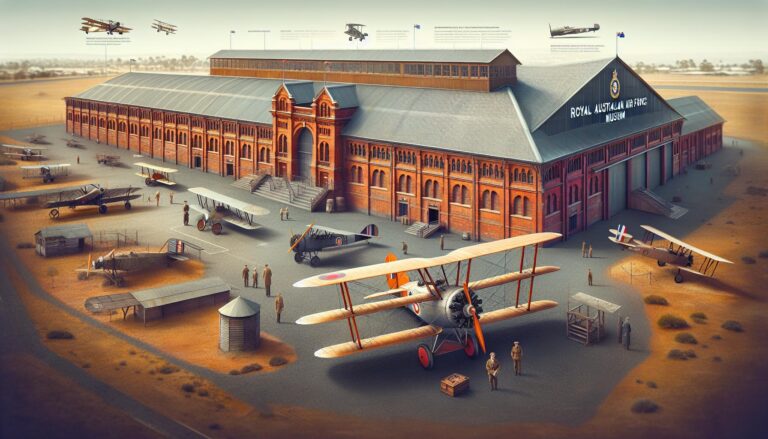Discover Point Cook: WWII Secrets, Ghost Tales, and Eco-Innovations
The History of Point Cook
Delving into the history of Point Cook, it’s easy to see why I’m captivated by this suburb’s past. Point Cook was named after John M. Cooke, who commanded the HMS Rattlesnake in 1836. This little tidbit was just the beginning of a fascinating journey through time.
The area’s original inhabitants, the Indigenous people of the Kulin nation, have a connection to the land that stretches back thousands of years, a fact that enriches Point Cook’s historical tapestry. Their stewardship of the land is a poignant reminder of Australia’s deep cultural history.
In the late 19th and early 20th centuries, Point Cook played a pivotal role that few outside the area might guess – it was instrumental in the development of Australia’s aviation history. In 1914, the Royal Australian Air Force (RAAF) established its first air base here, making Point Cook the birthplace of military aviation in Australia. This airbase is not only the oldest continually operating military airbase in the world but also a key chapter in the country’s military history.
During my exploration, it was thrilling to learn that Point Cook has more than just military history; it was also the setting for numerous pioneering flights. In 1919, the suburb was a starting point for the first trans-Australia flight, an event that marked the beginning of aerial innovation and paved the way for the development of aviation in the country.
As I wander through the streets today, remnants of this rich history blend seamlessly with modern developments. The establishment of the Point Cook Coastal Park and the Marine Sanctuary protects the natural landscape, preserving a piece of the area’s history for future generations. Furthermore, the suburb respectfully commemorates its aviation heritage, with public spaces and institutions honouring those who contributed to its development.
This historical journey through Point Cook has not only deepened my appreciation for the area but also highlighted the unexpected ways in which this suburb has influenced broader Australian history. From its indigenous roots to its significant contributions to the country’s military and aviation advancements, Point Cook’s history is a compelling narrative of growth, innovation, and perseverance.
Aviation Heritage in Point Cook
As I delve deeper into the fascinating facets of Point Cook, its aviation heritage is something that truly stands out. It’s a chapter of the suburb’s history that not only marked the beginning of military aviation in Australia but also showcased pioneering flights that laid the foundation for the country’s aviation industry.
In 1914, Point Cook became the cradle of Australian military aviation with the establishment of the Central Flying School (CFS). This wasn’t just a formative moment for the Australian Flying Corps, which later evolved into the Royal Australian Air Force (RAAF), but it was a pivotal point in Australia’s national defence strategy. To think that the very skies above Point Cook were graced by the first military pilots in the country, navigating aircrafts that were at the cutting edge of technology at the time, fills me with a sense of awe.
The RAAF Museum located in Point Cook is a treasure trove that solidifies the suburb’s role in aviation history. It hosts an impressive collection that spans from the fledgeling days of military aviation to contemporary aircraft. Walking through the museum, I’m always struck by the tangible connection to the past, with each exhibit telling a story of innovation, bravery, and significant milestones.
Another fascinating piece of trivia is the world-renowned Point Cook Air Pageant. This event showcases an array of vintage and modern aircraft, thrilling air displays, and a chance for aviation enthusiasts to come together. It’s a living testament to the suburb’s ongoing contribution to and passion for aviation, connecting the past with the present in a spectacular aerial show.
| Milestone | Year | Highlight |
|---|---|---|
| Establishment of CFS | 1914 | Birth of military aviation in Australia |
| Formation of the Australian Flying Corps | 1914 | The precursor to the RAAF |
| Opening of the RAAF Museum | Not specified | Home to a rich collection of aviation history |
If there’s one thing these historical snippets have taught me, it’s that Point Cook is more than just a suburb near Melbourne. It’s a landmark in the sweep of Australian history, a place where the sky bore witness to the bravery and pioneering spirit of those early aviators. The legacy of those days is still palpable, inspiring not only those with a passion for aviation but also anyone interested in the remarkable stories that shaped Australia.
Unique Natural Attractions
While Point Cook is often celebrated for its aviation heritage, the area is also home to some breathtaking natural attractions that I find utterly captivating. Exploring these spots has given me a deeper appreciation for the unique beauty nestled within this suburb.
One of Point Cook’s most enchanting natural attractions is the Point Cook Coastal Park. This vast reserve offers a tranquil escape with its beautiful beaches and sprawling wetlands. Walking through this park, I’m always amazed by the diverse wildlife, especially the birdlife. The park is a haven for birdwatchers, where one can spot anything from elegant spoonbills to vibrant pink flamingos. It’s a sight that never fails to inspire awe in me.
Another gem is the Cheetham Wetlands. This place holds a special spot in my heart for its incredible biodiversity and the way it beautifully melds the natural and the instituted. The wetlands not only provide a critical habitat for migratory birds making their long journeys across the globe but also feature a striking lookout tower. Climbing up this tower offers a panoramic view that I find simply breathtaking. The landscape, stretching out towards the horizon, is a patchwork of nature’s artistry and human conservation efforts.
For those who love a more hands-on approach to nature, the Point Cook Homestead Precinct provides a compelling blend of history and natural beauty. The area around the homestead is teeming with local flora and fauna, offering a serene backdrop for picnics or leisurely walks.
It’s these natural attractions that paint Point Cook not just as a place of historical significance but as a sanctuary where nature thrives. Whether it’s the calmness of the coastal park, the ecological richness of the wetlands, or the historic charm of the homestead precinct, there’s a thread of natural beauty that weaves throughout Point Cook.
Exploring these places, I’m reminded of the importance of preserving such natural heritage. It’s a legacy that enriches our present and gifts future generations with the touchstone of natural beauty. As I wander through these landscapes, each visit unveils something new, a different bird call or a previously unnoticed trail, keeping the experience fresh and vibrant. Rediscovering these natural sites is a journey I never tire of, and I’m always eager to share these experiences, hoping to inspire others to explore and cherish these local treasures.
Quirky Facts and Trivia
Point Cook is full of surprises, and as I’ve delved deeper into its secrets, I’ve stumbled upon some quirky facts and trivia that I’m eager to share. This area is not just about serene landscapes and aviation history; it’s also home to some truly peculiar and fascinating tales.
First off, did you know that Point Cook has been a backdrop for several film and television productions? That’s right, its unique landscapes and historical sites have caught the eye of filmmakers, making it a local celebrity in its own right. It’s always a thrill to recognise a local spot on the big screen, adding a layer of excitement whenever I explore these areas.
Another intriguing tidbit is about the Cheetham Wetlands. Beyond their ecological significance, these wetlands play a crucial role in an international art project. They house a series of reflective discs that contribute to a global project known as the Global Art Project, essentially turning the site into a massive, living piece of artwork. The thought that Point Cook actively contributes to a global conversation through art is both astounding and heartwarming.
Moreover, Point Cook’s commitment to preserving its natural and historical heritage is evident through its unique wildlife crossings. These structures are specifically designed to ensure the safe passage of native animals across busy roads, reducing the risk of accidents and promoting biodiversity. It’s a profound statement of how communities can live in harmony with their natural surroundings.
For those interested in the uncanny and mysterious, Point Cook does not disappoint. There have been several reported UFO sightings in the area over the years, attracting both curiosity and scepticism. Whether these sightings are attributed to atmospheric phenomena or something more extraterrestrial, they add an intriguing layer of mystery to Point Cook’s already rich tapestry.
Lastly, and perhaps most delightfully, Point Cook holds an annual festival dedicated to celebrating the diversity of kites. From traditional designs to modern engineering marvels, the sky over Point Cook becomes a canvas of colour and creativity, symbolising the community’s vibrant spirit and innovative outlook.
These quirky facts about Point Cook not only make for fascinating conversation starters but also highlight the area’s unique charm. From its role in global art installations to the peculiar tales of UFO sightings, Point Cook proves that there’s always something new and exciting to discover. As I continue to explore, I’m constantly reminded of the depth and diversity this wonderful place has to offer.
Remarkable Stories of Point Cook
Delving deeper into the heart of Point Cook, I’ve stumbled upon tales that are as enchanting as they are surprising. These are not just stories passed through generations but are episodes that have shaped the town’s identity.
One standout narrative is the story of the Ranford Manor. Legend has it that this grand building, now a heritage landmark, was once the site of clandestine meetings during World War II. It’s said that key military strategies were discussed within its walls, making it a focal point in Australia’s defence history. Though now tranquil, the manor’s past resonates with echoes of urgency and whispers of secret gatherings.
Another captivating tale revolves around the Point Cook Homestead. Dating back to the 1850s, this historic estate has stories woven into its very foundations. Apart from its architectural beauty and significance in Point Cook’s settlement history, it’s rumored to be haunted. Visitors and locals alike speak of encounters with the spectral figure of Thomas Chirnside, one of the original owners, wandering the grounds. It’s as if he’s still overseeing his beloved homestead.
In the realm of the extraordinary, Point Cook’s Flora and Fauna contribution cannot be overlooked. The Cheetham Wetlands play host to a remarkable array of bird species, some of which are migratory visitors from as far off as Siberia. This global connection emphasizes Point Cook’s role in the broader ecological network and highlights the importance of conservation efforts to maintain these vital migratory paths.
Here’s a quick snapshot of the Cheetham Wetlands’ significance:
| Feature | Detail |
|---|---|
| Location | Point Cook, Victoria, Australia |
| Importance | Key site for migratory bird species |
| Migratory Birds Origin | Siberia and other parts of Asia |
| Conservation Efforts | Habitat preservation and educational programs |
Conclusion
Diving into the heart of Point Cook has been a fascinating journey. I’ve uncovered tales that weave together the past and present, showing how history, innovation, and nature coexist beautifully in this town. From the secretive gatherings at Ranford Manor to the playful learning at the Sea Dragon Children’s Centre, it’s clear that Point Cook is a place of stories and surprises. The Cheetham Wetlands, with their international avian visitors, remind me of the global connections we share through nature. It’s been a pleasure to explore the layers of Point Cook, and I hope you’ve found its tales as captivating as I have. Here’s to discovering more hidden gems in the places around us.







